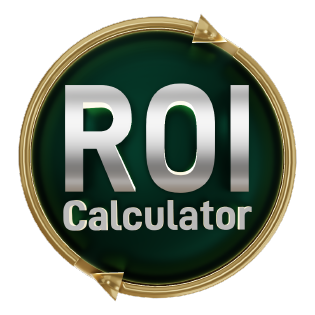Introduction
In modern business-to-business (B2B) commerce, where every decision is meticulously calculated, and opportunities are often fleeting, the integration of data-driven marketing strategies has emerged as not just a competitive edge but a fundamental necessity. Within this landscape, the utilization of data has shifted from being a mere asset to a driving force that shapes the trajectory of success for B2B enterprises.
As our digital ecosystem continues its exponential expansion, marked by an unceasing flow of data across industries and geographies, a clear pattern emerges: data-driven strategies are no longer optional for B2B businesses. The statistics underscore this shift, revealing that more than 70% of B2B marketers consider data-driven marketing pivotal to their accomplishments, with brands leveraging data comprehensively standing an 80% greater chance of realizing their objectives. These figures substantiate the metamorphosis underway, signaling a departure from traditional paradigms and an entry into an era defined by informed, precise, and outcome-oriented strategies.
This blog delves deep into the core of data-driven marketing strategy tailored for B2B companies, unraveling the rationale behind their indispensability in the contemporary landscape. This exploration will navigate the intricate tapestry of data – its acquisition, interpretation, and strategic application – that drives modern B2B marketing to new pinnacles of success.
Come along on this journey as we explore the coming together of data and strategy. We'll uncover the methods, ideas, and success stories that highlight its crucial role. Together, we'll navigate a space where businesses take on the part of data architects, exploring new marketing strategies that fit in a world where data-driven environments are at the core of effective B2B interactions. Connect with data driven marketing companies such as Vajra Global to understand how leveraging the digital space can achieve your business goals.
Understanding B2B Strategy
A B2B strategy encompasses the comprehensive plan that a business-to-business (B2B) company employs to achieve its growth objectives and build strategic partnerships. It is the blueprint that outlines how a company positions itself within the market, identifies target clients, and tailors its offerings to meet the specific needs of other businesses. A B2B strategy is the guiding compass that propels a company towards sustainable expansion and meaningful collaborations by aligning its resources, goals, and actions.
Unique Characteristics of B2B Marketing:
B2B marketing operates within a distinct realm characterized by nuances that set it apart from consumer-oriented approaches. These characteristics profoundly influence how B2B strategies are crafted and executed:
Extended Sales Cycles: Unlike consumer purchases that often happen quickly, B2B sales cycles are typically longer and involve a series of well-informed decisions. These extended cycles demand strategies that nurture relationships over time and provide value at each stage of the process.
Relationship-Driven Focus: B2B transactions are driven by relationships, trust, and mutual benefits. Companies seek partners that align with their long-term objectives and can provide reliable solutions. This necessitates strategies that prioritize building and maintaining strong, enduring connections.
Complex Decision-Making Units: B2B purchases often involve multiple decision-makers within an organization. Strategies must navigate this intricate landscape by addressing the concerns and priorities of diverse stakeholders.
Solution-Centric Approach: B2B buyers are motivated by solutions that solve specific business challenges. Effective strategies focus on showcasing the value and practicality of these solutions in addressing the unique pain points of each target company.
In-depth Industry Knowledge: B2B marketing requires a profound understanding of the industry in which both the marketer and the client operate. Strategies must demonstrate expertise and tailor messaging to resonate with the intricacies of the industry.
Customization and Personalization: B2B clients expect tailored offerings that address their specific needs. Strategies should emphasize customization and personalization to demonstrate a commitment to meeting these specialized requirements.
Educational Content: In the B2B landscape, informed decisions are paramount. Strategies often revolve around providing valuable educational content that assists clients in understanding complex products or services.
In essence, B2B marketing thrives on establishing enduring partnerships through trust, value, and expertise. Successful strategies leverage these unique characteristics to craft approaches that nurture relationships, address complex decision-making structures, and present solutions in a manner that aligns with the specific needs of businesses.
The Power of Data-Driven B2B Marketing Strategy

In the dynamic realm of B2B marketing, where precision and relevance are paramount, the emergence of data-driven strategies has ushered in a transformative era. Data-driven marketing, as the name suggests, revolves around harnessing the power of data to guide every facet of a marketing strategy. This approach represents a departure from traditional methods, where decisions were often influenced by gut feelings and broad assumptions. Instead, data-driven marketing introduces a scientific precision that propels B2B strategies into uncharted territories of effectiveness.
Empowering Informed Decision-Making and Targeted Campaigns
At the core of data-driven strategies lies the ability to make informed decisions backed by concrete insights. Data serves as a compass that guides marketing professionals through the labyrinth of choices, revealing patterns, preferences, and trends that might otherwise remain hidden. By analyzing data points from customer interactions, purchasing behavior, and market trends, B2B companies can gain a holistic understanding of their target audience's needs, desires, and pain points.
Armed with this knowledge, data-driven strategies enable the creation of campaigns that are laser-focused and tailored to meet the specific requirements of each business prospect. Rather than employing a one-size-fits-all approach, marketing efforts can be finely tuned to resonate with the unique characteristics of individual businesses. This level of customization not only enhances engagement but also cultivates a sense of relevance and value, essential for nurturing meaningful B2B relationships.
Data-driven marketing strategies also pave the way for predictive analysis, where historical data is leveraged to forecast future trends and behaviors. This predictive capability allows B2B companies to anticipate their clients' needs and preferences, enabling them to position their offerings proactively and gain a competitive advantage.
In essence, data-driven marketing is not just a technological evolution; it's a strategic revolution. By utilizing data to inform decision-making, B2B strategies can operate with surgical precision, delivering messages that resonate, solutions that solve, and outcomes that foster growth. The transformative impact of data-driven marketing is reshaping B2B strategies, paving the way for a new era of engagement, relevance, and success.
The Role of Data in Marketing
Data has become the cornerstone of effective B2B marketing, offering a wealth of insights that guide decision-making, refine strategies, and drive measurable results. From pinpointing potential clients to assessing campaign performance, data serves as a compass that navigates the intricate landscape of B2B interactions.

Identifying Prospective Clients:
- Demographic and firmographic data help profile potential clients based on industry, company size, location, and more.
- Behavioral data, such as website interactions and content engagement, indicates genuine interest and intent, guiding outreach efforts.
Segmentation and Personalization:
- Data enables segmentation, categorizing prospects into groups with shared characteristics for tailored messaging.
- Personalized communication uses data insights to craft messages and offers that resonate with individual needs, enhancing engagement.
Lead Generation and Scoring:
- Data-driven lead generation utilizes digital footprints to identify and nurture leads exhibiting interest.
- Lead scoring assigns values based on engagement, aiding sales teams in prioritizing follow-ups.
Content Strategy Optimization:
- Analyzing data reveals content preferences, helping marketers create materials that address specific pain points.
- Performance data informs content strategy adjustments, ensuring ongoing relevance and effectiveness.
Campaign Development and Targeting:
- Data guides campaign development by identifying platforms and channels favored by the target audience.
- Insights help refine targeting parameters, reaching decision-makers with tailored messages.
Real-time Campaign Optimization:
- Data provides real-time campaign performance metrics, allowing for immediate adjustments to improve engagement.
- A/B testing relies on data insights to compare variations and refine campaigns for optimal results.
ROI Measurement:
- Accurate data enables the measurement of campaign ROI by tracking conversions, sales, and customer acquisition costs.
- Data-driven ROI insights guide future budget allocations and strategic decisions.

Why Employ Data-Driven Marketing Strategies?
The importance of data integrity cannot be overstated in the realm of B2B marketing:
Informed Decision-Making: Accurate data ensures decisions are rooted in actual insights, minimizing guesswork and enhancing strategic planning.
Precision Targeting: Relevant data enables targeted campaigns, minimizing wastage and ensuring messages reach the right audience.
Personalized Experiences: Actionable data fuels personalization, enhancing customer experiences by tailoring interactions to individual preferences.
Results Validation: Data-driven strategies provide measurable outcomes, allowing marketers to validate campaign effectiveness and adjust approaches.
Adaptation and Growth: Data-driven insights facilitate adaptation to changing market dynamics, fostering innovation and continued growth.
In essence, accurate, relevant, and actionable data is the cornerstone of modern B2B marketing. It shapes every aspect of strategy, ensuring campaigns resonate with the right audience, optimize resources, and drive meaningful business outcomes.Improve conversion rates using smart data-driven strategies, customized to suit your business goals.
Empowering Digital Marketing Strategies through Data-Driven Insights
Data comes in various forms, each holding unique insights that contribute to crafting personalized B2B marketing strategies. Let's delve into four essential types of data: demographic, firmographic, behavioral, and transactional data.
Demographic Data:
Demographic data provides information about the characteristics of individuals, such as age, gender, job title, and location.
How can it help?
Demographic data helps create a general profile of potential clients. It informs marketers about their target audience's basic attributes, enabling the customization of messaging to resonate with specific groups.
Firmographic Data:
Firmographic data focuses on the characteristics of the businesses themselves, including industry, company size, revenue, and geographic location.
How can it help?
Firmographic data allows marketers to tailor campaigns to the unique needs of businesses in different industries and sizes. It helps in identifying prospects that align with the company's offerings.
Behavioral Data:
Behavioral data tracks how individuals interact with a company's digital assets, such as website visits, content consumption, and email engagement.
How can it help?
Behavioral data offers insights into prospects' interests and intent. Marketers can use this data to create targeted content, recommend relevant products or services, and guide leads through the sales funnel based on their actions.
Transactional Data:
Transactional data records past interactions and transactions, including purchases, inquiries, and contract renewals.
How can it help?
Transactional data informs marketers about the history and preferences of existing clients. This information allows for cross-selling, upselling, and creating tailored offers that align with clients' past purchasing behaviors.
Collecting and Leveraging Data
B2B companies have a myriad of channels through which they can collect valuable data to inform their marketing strategies. Here's a breakdown of some key channels:
Website Analytics:
Utilize tools like Google Analytics to track website visitors, their behavior, and interactions. This data reveals which pages they visit, how long they stay, and where they drop off, providing insights into their interests and pain points.
CRM Systems (Customer Relationship Management):
CRM systems store valuable information about leads and clients, including their contact details, interactions, and purchase history. This data helps in segmenting clients, tracking engagement, and tailoring communications.
Social Media:
Social media platforms offer insights into audience demographics, engagement metrics, and content performance. Leveraging these insights helps tailor content to what resonates with the target audience.
Email Campaigns:
Tracking email open rates, click-through rates, and conversions provides data on how prospects and clients engage with your content and offers. This guides the refinement of email strategies.
Surveys and Feedback:
Gathering direct feedback through surveys and forms provides valuable qualitative data about pain points, preferences, and satisfaction levels, aiding in strategy refinement.
Third-Party Data Providers:
Partnering with reputable data providers can offer access to external data sources that enhance your understanding of target audiences and industries.

Data-Driven Marketing Strategies: What to Watch Out For
Ensuring the robustness of data integrity, safeguarding privacy, and adhering to compliance regulations are pivotal aspects that underpin the foundation of successful data-driven marketing strategies.
Data Quality:
Accurate and up-to-date data is paramount for effective decision-making. Inaccurate data can lead to misguided strategies and wasted resources. Regularly clean and update your data to ensure its reliability.
Data Privacy:
With data breaches becoming a concern, respecting data privacy builds trust with clients. Ensure that you handle personal information responsibly, comply with relevant data protection laws, and obtain proper consent.
Compliance:
Adhering to data protection regulations, such as GDPR or CCPA, is not only legally required but also demonstrates ethical responsibility. Non-compliance can result in legal repercussions and damage to your brand's reputation.
Ethical Data Use:
Transparently communicate how collected data will be used and provide the option to opt out. Use data for purposes that benefit both parties, fostering positive client relationships.
Data Security:
Safeguard collected data against cyber threats and breaches by implementing robust security measures, encryption, and regular audits.
In the age of data-driven marketing, the quality, privacy, and compliance of collected data are non-negotiable. High-quality, ethically obtained data builds the foundation for meaningful interactions, personalized strategies, and long-lasting B2B relationships.
Five Data-Driven Marketing Strategies for B2B Companies
Elevating B2B marketing to new heights requires the adept integration of data-driven strategies. These five meticulously crafted approaches harness the power of data to not only amplify engagement but also forge enduring connections in the intricate landscape of B2B interactions.
Account-Based Marketing (ABM) Fueled by Targeted Company Data:
- Utilize firmographic and behavioral data to identify high-potential accounts.
- Craft personalized campaigns that resonate with each account's specific pain points and needs.
- Deliver content and solutions tailored to decision-makers within the targeted companies.
- Leverage data insights to refine and adapt your ABM strategy as you gain deeper understanding of each account's preferences.
Personalized Email Campaigns Using Behavioral and Transactional Data:
- Analyze behavioral data to understand how leads engage with your emails and website.
- Tailor email content based on their interests and actions, offering relevant solutions.
- Utilize transactional data to suggest complementary products or services based on past purchases.
- Implement triggered emails that respond to specific behaviors, such as abandoned carts or completed downloads.
Content Marketing Based on the Interests and Pain Points of Specific Industries:
- Utilize firmographic data to segment your audience by industry.
- Research and understand the pain points, challenges, and trends specific to each industry.
- Create content that addresses these pain points and offers valuable insights or solutions.
- Share industry-specific content through targeted channels and engage with industry influencers to increase reach.
Social Media Advertising with Tailored Messaging for B2B Audiences:
- Utilize demographic and firmographic data to identify your ideal B2B audience on social media platforms.
- Craft messaging that speaks directly to their needs, challenges, and aspirations.
- Use data insights to choose the most effective platforms and ad formats for reaching your target audience.
- Monitor engagement metrics and adjust your social media strategy based on the performance of different campaigns.
Predictive Analytics for Identifying Potential Leads and Market Trends:
- Collect and analyze a wide range of data, including behavioral, firmographic, and transactional, to create a comprehensive picture of your target audience.
- Use predictive analytics models to identify potential leads that exhibit similar behaviors and characteristics as your existing clients.
- Monitor market trends and identify emerging opportunities using data-driven insights.
- Continuously refine your predictive models based on the accuracy of their predictions.
These strategies showcase the power of data-driven approaches in B2B marketing. By harnessing the insights provided by various data types, B2B companies can create personalized, targeted, and highly effective campaigns that resonate with their audience, foster engagement, and drive meaningful business outcomes.
Case Study: Data-Driven B2B Strategy for "Canon Business Solutions"
Company Overview:
Canon Business Solutions is a renowned global leader in imaging and business solutions, providing cutting-edge technology to businesses of all sizes. They offer a wide range of products and services, including printers, scanners, document management solutions, and professional services.
Holistic Data-Driven B2B Strategy
Content Marketing Targeting Industry-Specific Pain Points:
Canon Business Solutions identifies pain points specific to industries like healthcare and finance. They create content that addresses these challenges, such as whitepapers on secure document management or case studies showcasing cost-saving solutions.
Design and Development of User-Centric Tools/Resources:
Canon develops tools like print cost calculators and workflow efficiency assessments. These interactive tools assist businesses in understanding the value of their solutions while collecting data to personalize future engagements.
Social Media Campaigns to Amplify Content and Engage the Audience:
Canon leverages demographic data to target professionals across platforms like LinkedIn. They share visually engaging content, success stories, and product innovations, encouraging interaction and fostering brand loyalty.
Paid Marketing for Targeted Lead Generation:
Using firmographic and behavioral data, Canon runs paid campaigns on search engines and social media. They direct potential clients to landing pages featuring industry-specific solutions and valuable content.
SEO Optimization to Increase Organic Visibility:
Canon optimizes their website for keywords related to office technology and industry-specific needs. This improves organic search rankings, ensuring their solutions appear prominently in relevant searches.
Data Analytics for Continuous Improvement:
Canon utilizes data analysis in digital marketing to monitor website engagement, content performance, and lead conversions. These insights guide content creation and inform adjustments to marketing strategies.
Impact on Business:
- Brand Authority: Canon's industry-specific content establishes them as experts, attracting businesses seeking tailored solutions.
- Engagement and Community Building: Social media campaigns create a platform for interaction and feedback, strengthening client relationships.
- Lead Generation: Paid marketing efforts targeting specific industries yield high-quality leads with a higher potential for conversion.
- Organic Growth: SEO optimization positions Canon as a go-to resource, driving organic traffic and brand recognition.
- Adaptability: Data analytics ensure strategies stay relevant and adaptable, maximizing campaign effectiveness.
Summary
Canon Business Solutions demonstrates the prowess of a holistic data-driven B2B strategy. By effectively employing content marketing, user-centric tools, social media, paid marketing, SEO, and data analytics, they position themselves as providers of innovative solutions. Their data-driven approach ensures they remain relevant and responsive to market needs, driving continuous growth and cementing their status as a leader in business technology solutions.
Leveraging Data-Driven marketing Strategies to Boost Business Growth
In the dynamic world of B2B marketing, the adoption of data-driven strategies is not just a trend but a transformative necessity. As illuminated by industry statistics, businesses that embrace data-driven marketing witness a 20% increase in sales on average, while 81% of marketers agree that data-driven strategies provide a competitive edge. The insightful case studies of prominent Indian companies like Tata Consultancy Services, Infosys, and Zoho underscore the tangible benefits of implementing these strategies.
From personalized email campaigns based on behavioral data to the innovative use of predictive analytics, the examples showcased in this blog shed light on the diverse ways data can revolutionize B2B engagement. By combining content marketing, design, social media, paid advertising, SEO, and data analytics, businesses like TechVision Solutions and Canon amplify their reach, deepen client connections, and foster growth.
As the business landscape evolves, data-driven marketing strategies empower B2B companies to navigate complexity with precision. They enable personalization that resonates, solutions that address real pain points, and outcomes that fuel expansion. With the power of data insights at their disposal, B2B companies have the opportunity to not only thrive but to reshape the very essence of how they engage, inspire, and excel in an era where data is the cornerstone of effective B2B interactions. Embracing data-driven strategies is not just a choice; it's the compass leading businesses toward sustainable success in a data-rich world.


